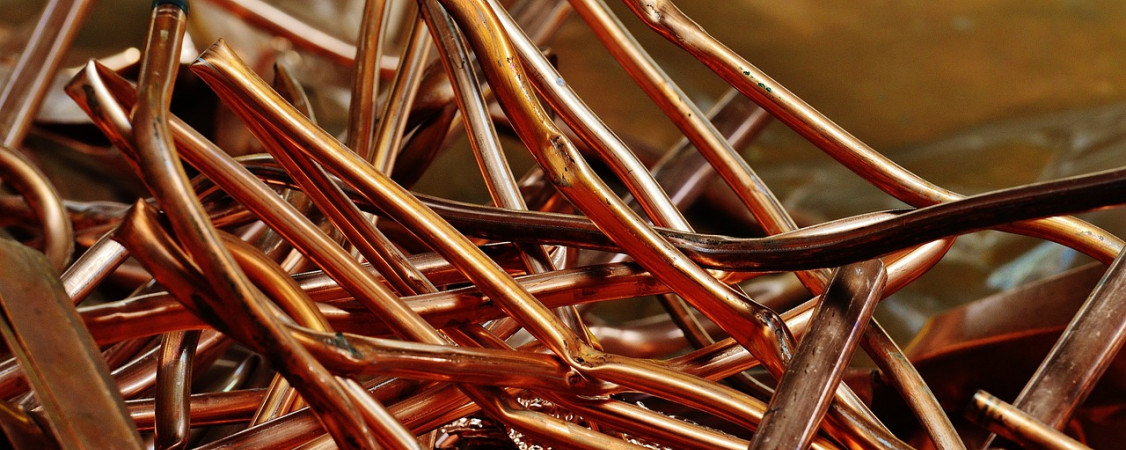Copper Alloys ist das größte und umfassendste wissenschaftliche Forum, das sich mit den Werkstoffwissenschaften von Kupfer beschäftigt. Die Konferenz Copper Alloys 2024 zielt darauf ab, die Kupfer- und Kupferlegierungs-Community weiter zu stärken, indem sie aktuelle Forschungsergebnisse liefert und notwendige Forschungs- und Entwicklungsansätze vor dem Hintergrund aktueller Megatrends reflektiert.
Das wachsende Bewusstsein für die Notwendigkeit eines verantwortungsvolleren Umgangs mit Ressourcen, die Stabilität der Umwelt und den Gesundheitsschutz sowie die unsichere geopolitische Lage haben Gesellschaft, Politik und Gesetzgebung dazu veranlasst, die Prioritäten auf der Agenda zu ändern. Kreislaufwirtschaft, fossilfreie Energie, Green Deal, Total Defense und andere Schlagworte stehen für dieses neue Paradigma und setzen Industrie und Wissenschaft unter hohen Druck, innovative Lösungen vorzuschlagen und zu entwickeln.
Als Reaktion auf die damit verbundenen Herausforderungen werden neue Anwendungen und Verfahren benötigt, und Universitäten, Forschungsinstitute und Marktteilnehmer entlang der Wertschöpfungsketten müssen ihre gemeinsamen Anstrengungen weiter verstärken. Die sich entwickelnden Plattformen für die Materialforschung und -entwicklung stellen hohe Anforderungen an die Optimierung und Ergänzung von Verarbeitungsmethoden, die Schließung von Lücken in den globalen Materialströmen und die Einführung verlustfreier Recyclingtechnologien.
Die Tagung Copper Alloys 2024 wird einen umfassenden Einblick in die Herausforderungen und Entwicklungen der kupferverarbeitenden Industrie geben und einen aktiven Wissens- und Meinungsaustausch ermöglichen.
Die Konferenzsprache ist Englisch.
Das Programm im Überblick
08.10.2024
|
Registration
|
|
Room 1: Production & Manufacturing
- Definition of a Process chain for Additive Manufacturing of Copper Components
- Additive Manufacturing of Copper Alloys for High Temperature Applications
- New Avenues in Direct Printing of Copper for Electronics via Drop-on-demand Molten Metal Jetting
- Investigations on the processability of copper-zinc alloys using wire and arcbased additive manufacturing processes
- Castability of lead-free brass
- Cored Wire introduction in a tundish: How to increase yield and accuracy
- Functionally Graded Materials: Continuous Casting of Electric Copper Conductors
- Resistance Welding of Big Copper Parts using Surface Structuring
|
Room 2: Material properties in applications
- Effects of microstructure and chemical composition on the corrosion behavior of Cu-Al-Mn-Ni shape memory alloys under salt spray exposure
- Evaluation of the corrosion resistance of lead-free brass alloys, explored through different accelerated tests
- Influence of Operational Parameters on the Corrosion Behavior of Nickel-Aluminum Bronze and Copper-Nickel Alloys in Seawater
- Correlation between microstructure and cavitation erosion behavior of Cu-Al-Mn-Ni
- Experimental estimations of diffusion rates of phosphorus in creep tested oxygen-free phosphorus doped copper (Cu-OFP)
- Root Cause Analysis of High Temperature Cracking on Cu-OFE for the HL – LHC Current Leads
- Correlation between corrosion behaviour, metal release and water quality for DZR and non DZR-alloys
- Comprehensive History of the Use of Copper Alloy CW724R in Drinking Water Applications
|
09.10.2024
|
Registration
|
|
Room 1: New Alloys and Material development
- Innovative free machining brass - Production, microstructure & properties of the lead-free alloy eZeebrass
- Advanced copper-nickel-tin spinodal alloys for high-performance applications
- Unlocking the Potential of CS4: A Lead-Free Brass Alternative for Enhanced Mechanical Properties and Environment
- Individual properties of the alfa and beta phases lead-free brass with different silicon and tin content
- Alloy development of a dezincificationinhibiting brass for the manufacturing of brass instruments
- Identification of lead-free CuZn-Alloys for
Lock Cylinder Manufacturing
- Computer simulations for Cu-based Alloys
– Beyond traditional CALPHAD
- Using additive manufacturing to process
precipitation strengthened high conductive copper alloys
|
Room 2: Life-cycle and surface properties
- Recovery of copper from Waste Electrical and Electronic Equipment: An energy transition approach towards sustainable future
- An ontology-based data-ecosystem for life cycle data of copper and copper alloys
- The impact of blue light illumination on the oxidation and chloride-induced atmospheric corrosion of copper at atmospheric conditions
- Production, characterization, and protection of artificial patinas on copper
- Timeless corrosion: modern understandings applied to the diagnosis of cultural heritage artefacts
- Importance of modern and classical investigation techniques to understand ancient metallurgy
- Reconstruction and Casting of a Late Roman Dodecahedron
- New approach for Low Budget Electrification of Railways
|
|
Final remarks
|
|
Online-Registration


